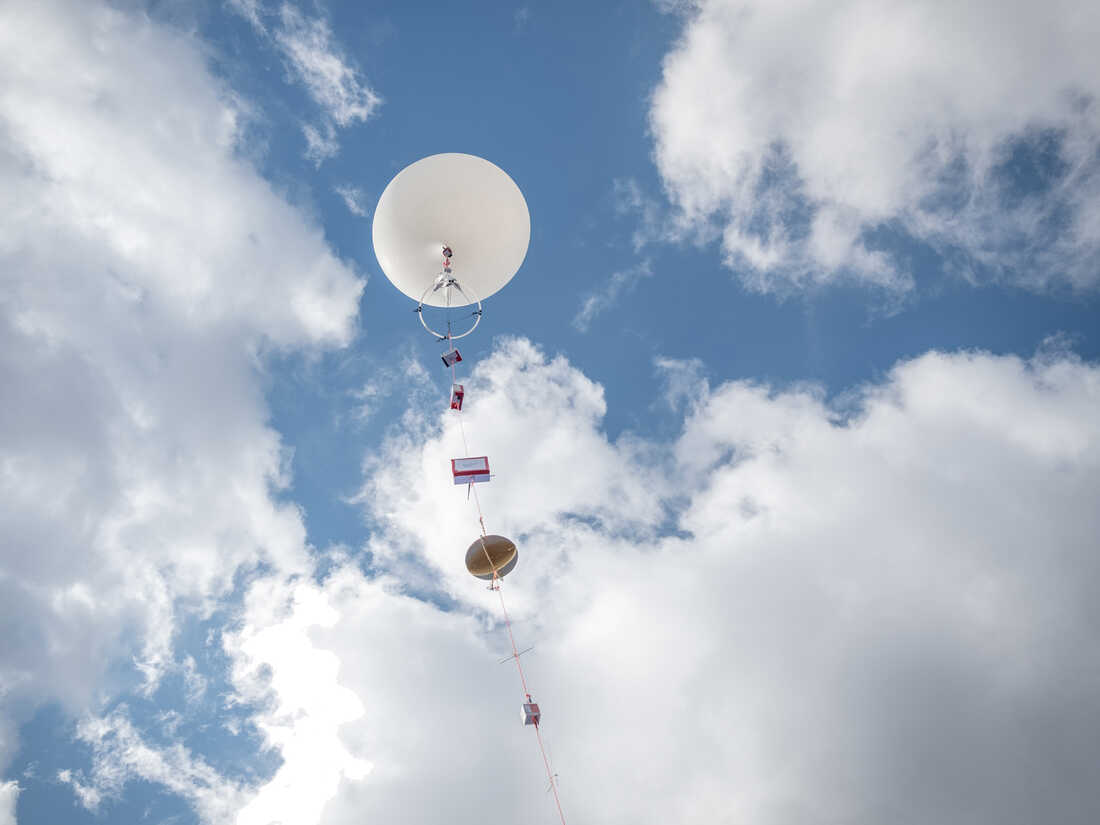Solar Eclipse
Hundreds of balloons go airborne to witness the eclipse from the edge of space
Hundreds of balloons are being launched into the path of the eclipse as part of a program to educate students.
Meredith Rizzo for NPR
hide caption
toggle caption
Meredith Rizzo for NPR
Hundreds of balloons are being launched into the path of the eclipse as part of a program to educate students.
Meredith Rizzo for NPR
For millions of Americans, Spring weather is making this eclipse a nail-biter: Will clouds spoil their view?
But that’s not the case for the roughly 650 balloons being launched today by the Nationwide Eclipse Ballooning Project. The high-altitude balloons are traveling at altitudes anywhere between 70,000 and 115,000 feet. Those altitudes are more than twice that of commercial airlines and far above the cloud tops. (The balloons are also made of biodegradable latex, so they won’t harm the environment).
On board are instruments built primarily by undergraduate science and engineering students. Teams from more than 75 institutions are launching balloons from points all along the path of totality.
The eclipse offers a unique opportunity to study the atmosphere, says Mary Bowden, a professor of Aerospace Engineering at the University of Maryland. The moon’s shadow cools a column of air that will move from south to north across the U.S., mixing things up.
“The eclipse itself is kind of stirring up the atmosphere as it traverses across the country,” Bowden says. “What we’re looking for is the signature, or the effect, of the movement of the shadow.”
Students prepare a practice balloon for launch late last month. The ballooning project offers an opportunity for them to learn many skills they might someday use for space probes and satellites.
Meredith Rizzo for NPR
hide caption
toggle caption
Meredith Rizzo for NPR
Students prepare a practice balloon for launch late last month. The ballooning project offers an opportunity for them to learn many skills they might someday use for space probes and satellites.
Meredith Rizzo for NPR
The balloon project also offers a unique opportunity for students to learn how to build things that must operate in extreme environments, work in a large group and troubleshoot problems on the fly — all skills that could someday be used for everything from satellites to deep space exploration.
The Maryland team will launch its balloons from Portland, Ind. It hopes to share views from above on a livestream.
“Hopefully we’ll have livestream video from the balloon in flight,” says Daniel Grammer, a junior who will direct today’s balloon launch for the team. “You’ll see the shadow move across the Earth, and it’ll be super cool to look at.”
NPR will be sharing highlights from across the NPR Network throughout the day if you’re unable to get out and see it in real time.
